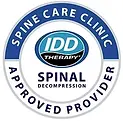Unlocking the Power of Physiotherapy and Osteopathy: Preventing and Rehabilitating Hamstring Injury
- David Ede
- Jan 30, 2024
- 3 min read
Updated: Jul 25, 2025

Hamstring Injuries are a common injury among athletes and active individuals, often resulting from sudden movements, overstretching, or inadequate conditioning. These injuries can be painful and debilitating, impacting performance and quality of life. However, with the guidance of physiotherapy and osteopathy, individuals can effectively prevent and rehabilitate hamstring strains, ensuring a safe return to activity and optimal function.
Understanding Hamstring Strain
The hamstring muscles, located at the back of the thigh, play a crucial role in activities such as running, jumping, and kicking. A hamstring strain occurs when these muscles are stretched beyond their capacity or subjected to excessive force, leading to microscopic tears in the muscle fibres. Symptoms of a hamstring strain may include pain, swelling, tenderness, and limited range of motion.
Prevention through Physiotherapy and Osteopathy
Strength and Flexibility Training: Physiotherapy and osteopathy emphasize the importance of strengthening the hamstring muscles and improving flexibility to reduce the risk of strain. Targeted exercises, such as hamstring curls, lunges, and dynamic stretching, help enhance muscle endurance and resilience.
Proper Technique and Body Mechanics: Physiotherapists and osteopaths assess movement patterns and biomechanics to identify any imbalances or weaknesses that may predispose individuals to hamstring injuries. By correcting posture and teaching proper body mechanics, these practitioners help clients optimize their movement efficiency and minimize strain on the hamstrings.
Warm-Up and Cool-Down Routines: Prior to engaging in physical activity, warm-up exercises and dynamic stretches prepare the muscles for movement and help increase blood flow to the tissues. Similarly, incorporating static stretches and foam rolling into a post-exercise cool-down routine promotes muscle relaxation and accelerates recovery.
Education and Injury Prevention Strategies: Physiotherapy and osteopathy sessions serve as valuable opportunities to educate individuals about the risk factors associated with hamstring strains and strategies for injury prevention. This may include recommendations for gradual progression in training intensity, proper footwear selection, and the importance of listening to the body's signals of fatigue and discomfort.
Rehabilitation with Physiotherapy and Osteopathy
Pain Management: Following a hamstring strain, physiotherapy and osteopathy interventions focus on alleviating pain and inflammation through modalities such as ice therapy, Tecar therapy, and manual techniques.
Progressive Exercise Prescription: Under the guidance of a physiotherapist or osteopath, individuals gradually reintroduce movement and activity through a structured rehabilitation program. Exercises targeting strength, flexibility, balance, and proprioception help rebuild muscle integrity and restore functional capacity.
Manual Therapy Techniques: Hands-on interventions, including soft tissue mobilization, joint manipulation, and myofascial release, facilitate tissue healing, improve circulation, and enhance mobility in the affected area.
Biopsychosocial Approach: Physiotherapy and osteopathy adopt a holistic approach to rehabilitation, considering the interconnectedness of physical, psychological, and social factors influencing recovery. By addressing underlying contributors to injury, such as stress, fatigue, and lifestyle habits, practitioners empower individuals to achieve long-term musculoskeletal health and resilience.
Conclusion
Physiotherapy and osteopathy serve as invaluable allies in the prevention and rehabilitation of hamstring strains, offering evidence-based interventions tailored to individual needs and goals. By emphasizing education, empowerment, and holistic care, these modalities enable individuals to overcome injury setbacks, optimize performance, and embrace a lifestyle of movement and vitality.
If you have suffered a Hamstring strain or want to prevent a hamstring strain from happening so you can stay on the pitch and out of the physio room Book an appointment today – Book online here or call on 01285 643080.
The Active team can’t wait to see you.

